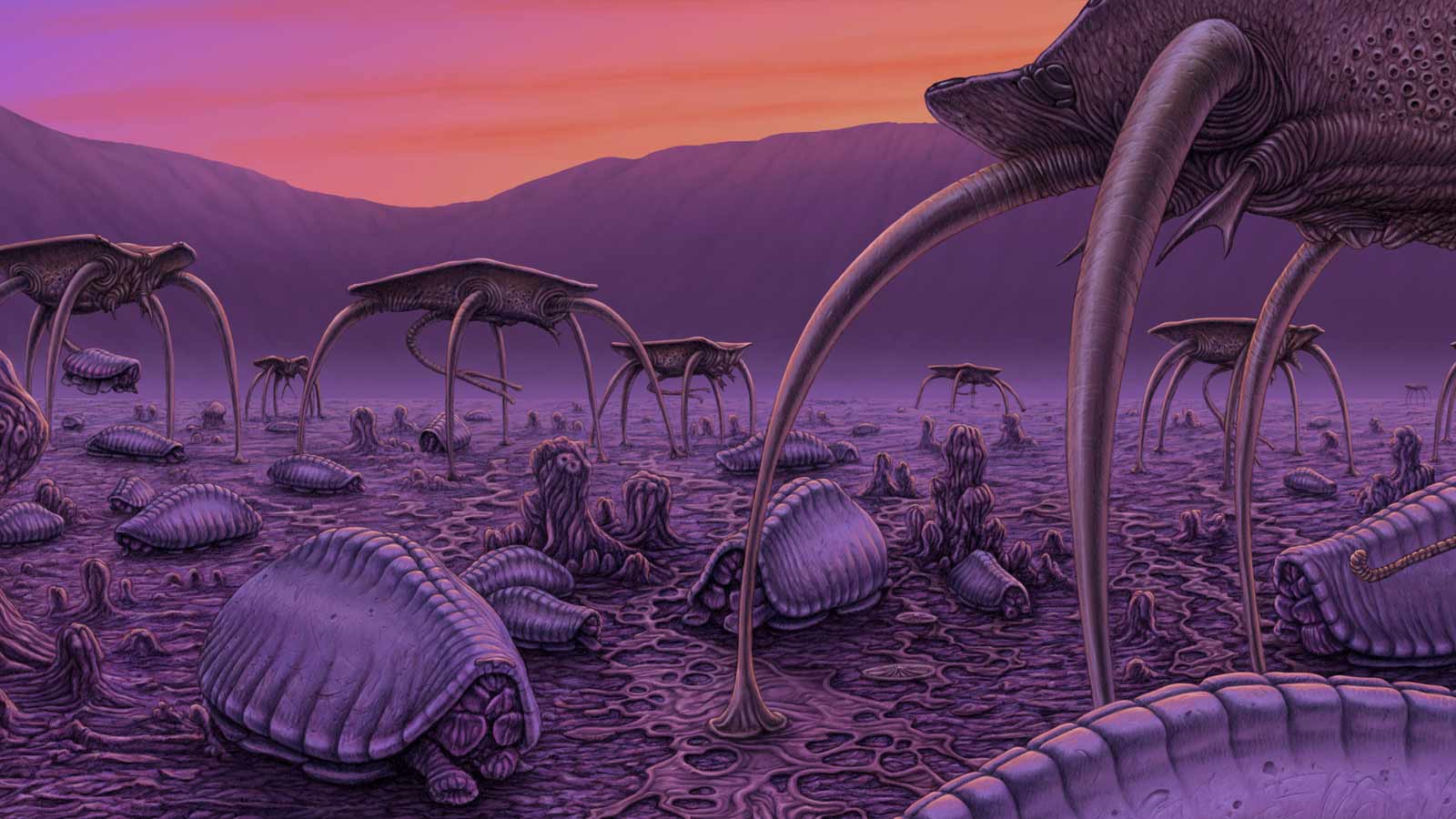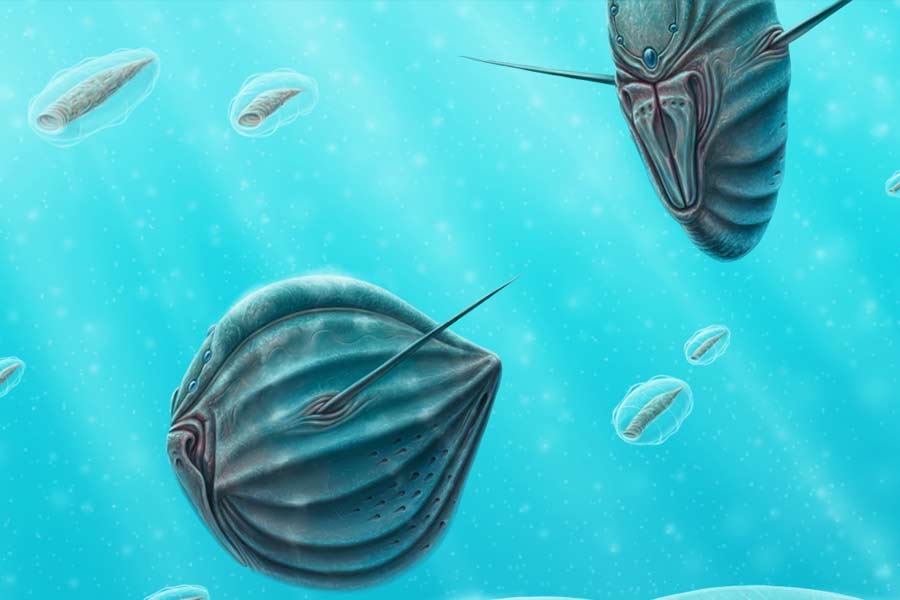Plains
The land of giants
Life in the great open spaces
In the flatlands of Veteris, where insufficient rain falls to support much vertical growth, autotrophs spread out into vast carpets. The open space and ample sunlight allow for the proliferance of enormous megafauna, along with creatures capable of running at great speed over the wide terrain.

A Storm Over the Spongeplains
2025, Digital
Creatures of the Spongeplains
The harsh conditions in this mountain valley have led to the proliferation of extremely tough inhabitants. Spreading like a wrinkled sheet of velvet is the Golden Mazemuffin. A matrix of colonial organisms and soil particulates, this autotrophic structure forms the floor of the region known as the Spongeplain. Not only does its upper surface support the great weight of the larger inhabitants here, but its deep crevices reach several meters below, creating a complex labyrinth for a unique subterranean habitat. It is into this hidden realm that the heavily armored Stabbitha lowers its proboscis to hunt. Releasing pheromones that resemble the smell of food, unwitting prey creatures are lured within reach and quickly hauled upwards into the predator’s sharp mouthparts.
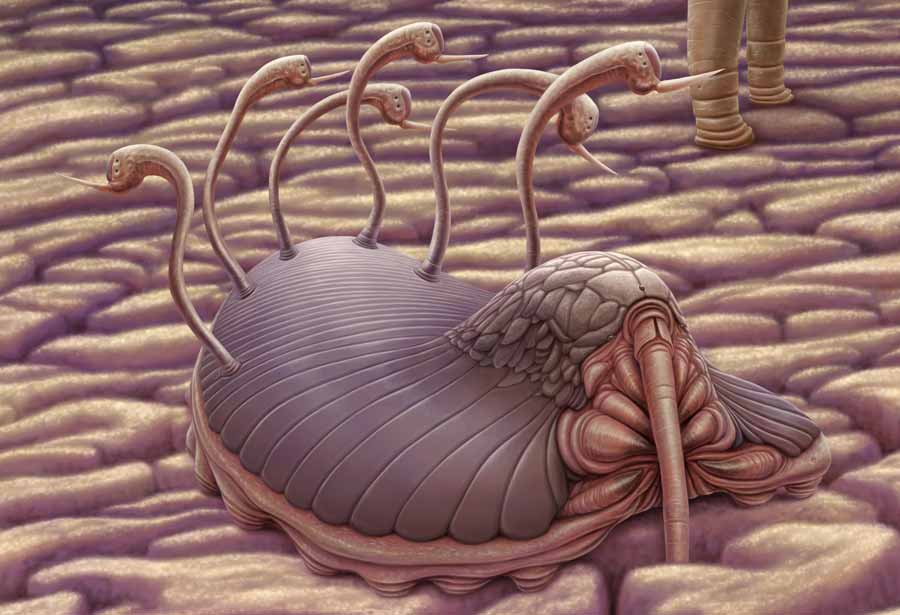
Stabbitha
A relatively sedentary creature, the Stabbitha relies on flexible dorsal plating for protection. However the best defense is offense, and additionally it employs some highly-effective weaponry to deter would-be aggressors. Rising from its shell are semi-autonomous appendages equipped with sensory receptors, eyes, and a rudimentary respiratory system. Each one is independently capable of targeting and jabbing an approaching threat with its sharp anterior spear. These structures are radically different than the creature’s main body, and are likely the result of an ultra-symbiotic convergence of two separate species in the distant past.
Currently they are concerned with the approach of the Spongeplain’s largest creature—a 15 foot tall giant known as a Triganteon. Traveling in pairs or small groups, Triganteon patrol these lands looking for easy prey. They will have to continue their search, as the Stabbitha can pierce even the thick hides of these enormous tripeds. With legs built like giant hydraulic springs, Triganteon have an astounding running speed, and can leap distances of 40 meters. Posterior gill-like structures dissipate heat, especially in midday when Triganteon often stand in full sun to absorb energy through their photosynthetic dorsal surfaces. A flock of orange Flame Pescaudas is oblivious to the ensuing standoff. Flying from one rim of the valley to the other, they need to swiftly return to their rocky roosts before the onset of the approaching storm.
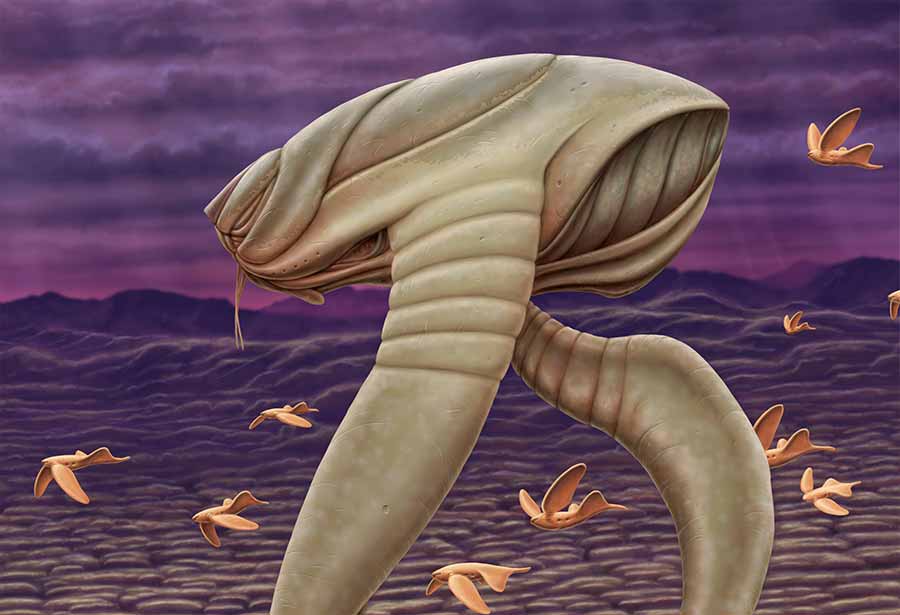
Triganteon
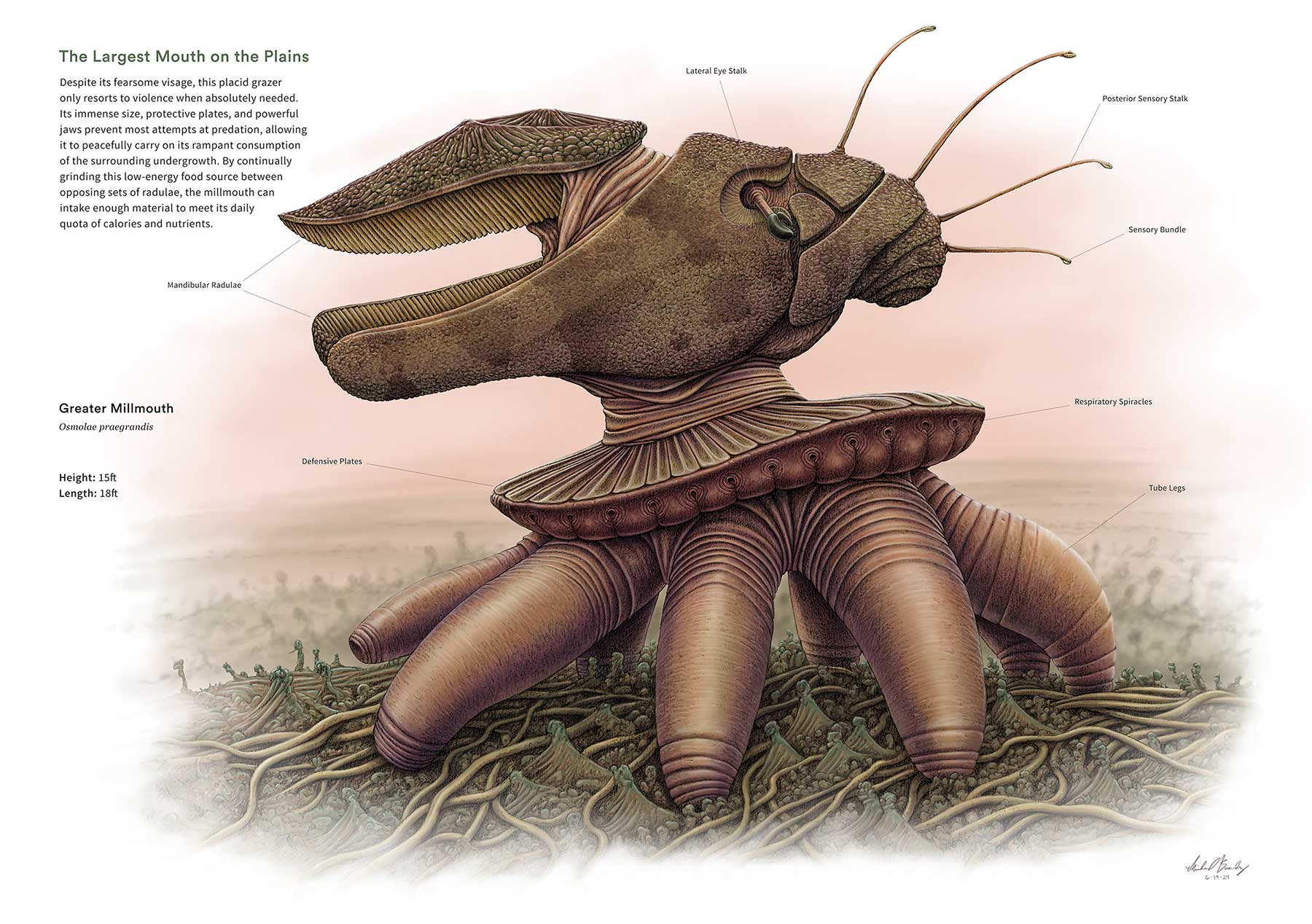
Greater Millmouth
2024, Charcoal Pencil and Digital
The largest mouth on the plains
Despite its fearsome visage, this placid grazer only resorts to violence when absolutely needed. Its immense size, protective plates, and powerful jaws prevent most attempts at predation, allowing it to peacefully carry on its rampant consumption of the surrounding undergrowth. By continually grinding this low-energy food source between opposing sets of radulae, the millmouth can intake enough material to meet its daily quota of calories and nutrients.
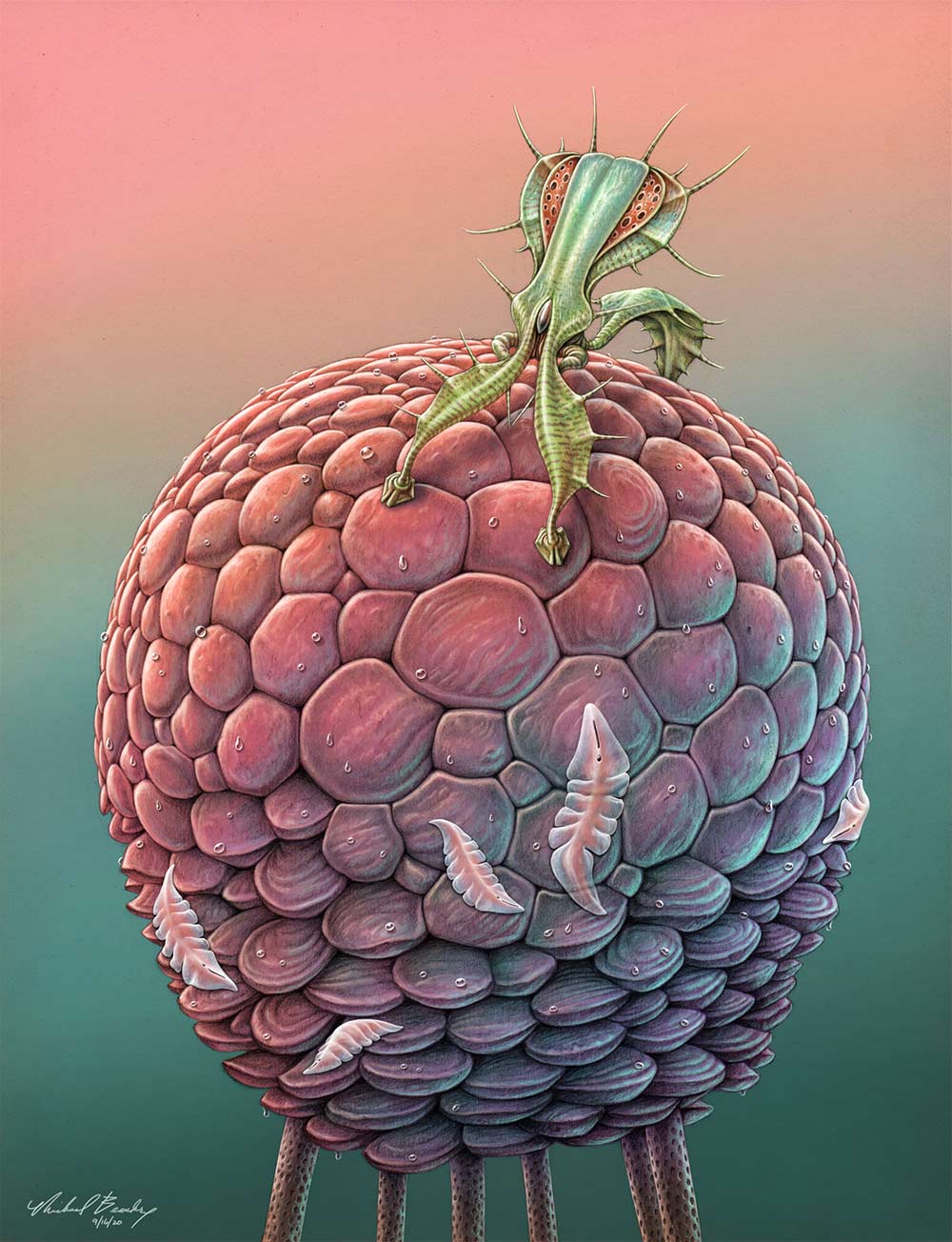
Guardian
2020, Digital
Gardeners of a tiny world
On Veteris, it is common for creatures to obtain energy from multiple sources. The large round, multifaceted autotroph, known as a Round Walker, angles its plates to face the sunlight at any given time of day. It also feeds on decomposing organic matter it obtains by moving slowly on its long spindly legs. Conversely, the Spiny Guardian on top originally evolved to hunt the semi-transparent flat creatures that feed on the round walker, but came to rely on them exclusively. Over many generations, individuals that allowed some prey items to live and reproduce eventually outlasted the more aggressive hunters, and now their style of subsistence is closer to farming.
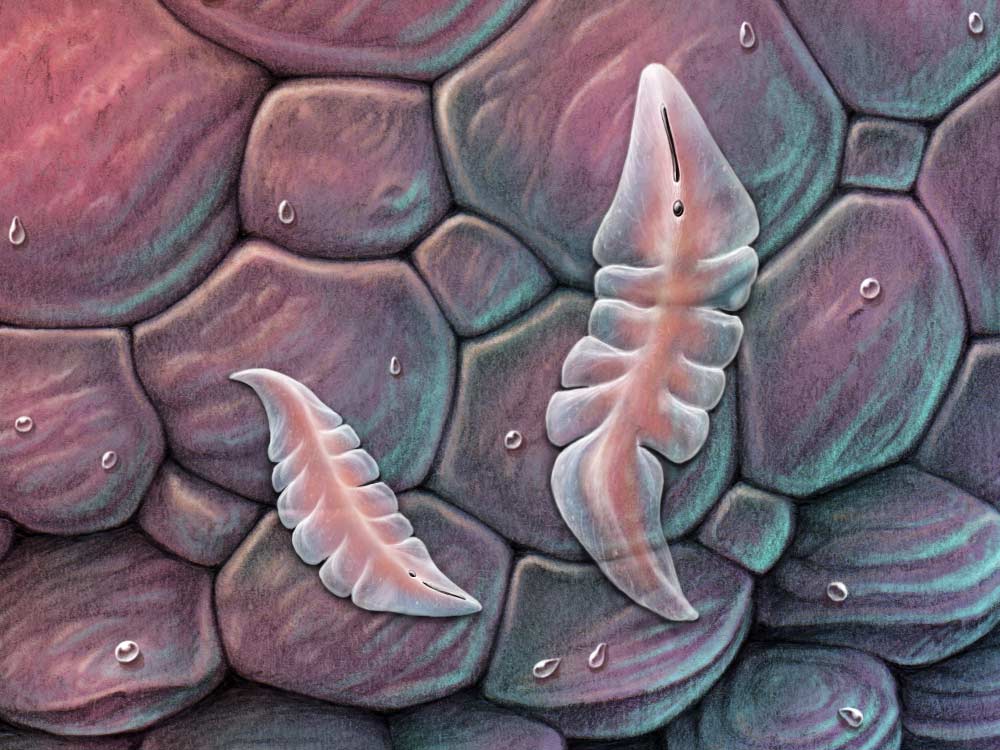
The guardians now protect the entire micro-system – each large round walker and its flock of parasites is topped by a spiny guardian who has the dual task of defending against predators as well as keeping the herd numbers in check. A round walker without a guardian slowly succumbs to parasite overpopulation. Occasionally huge numbers of walkers congregate in vast gently-swaying miniature forests, each crowned by a flamboyant spiny guardian defending its small world.
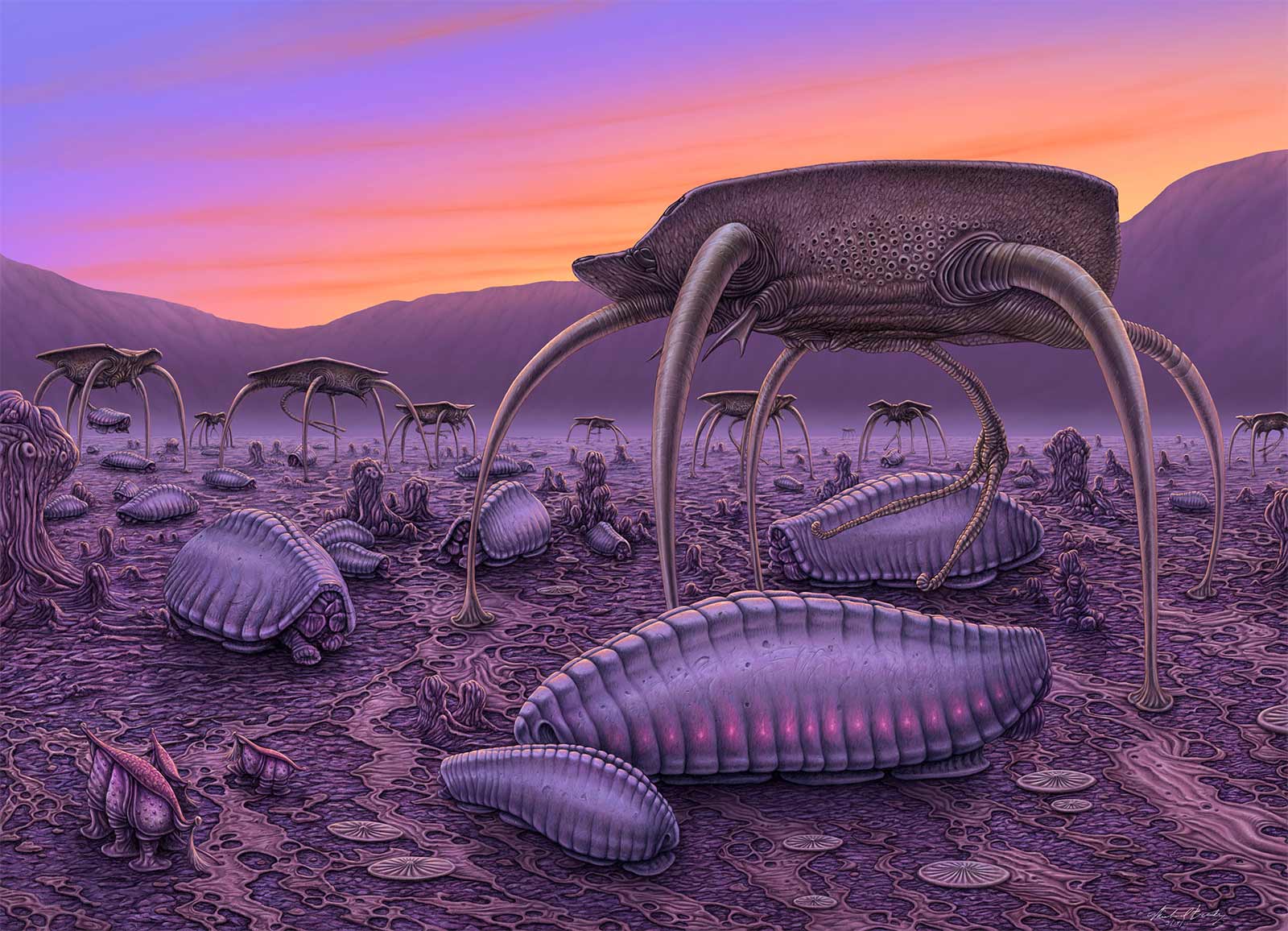
Herders
2021, Digital
Herders of the valley
On a valley plain, a group of herders watches over its flock. At around 15 feet in height, the Magnavindix have flat tops, good for catching the sun’s rays to supplement their energy requirements through photosynthesis. The majority of their sustenance however, comes from the placid, defenseless Iumentus creatures they tend to. Imposing in stature and well armed, they play the role of defender, shepherd, and also matchmaker, bringing a pair of Iumentus together when their biolights signal readiness to breed.
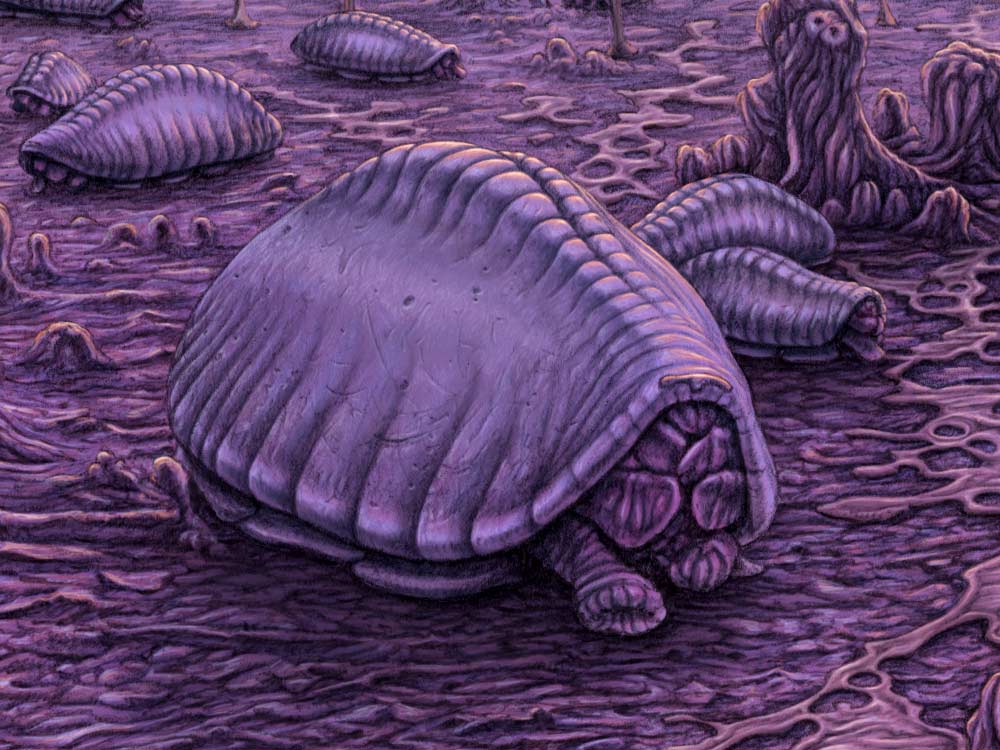
Iumentus
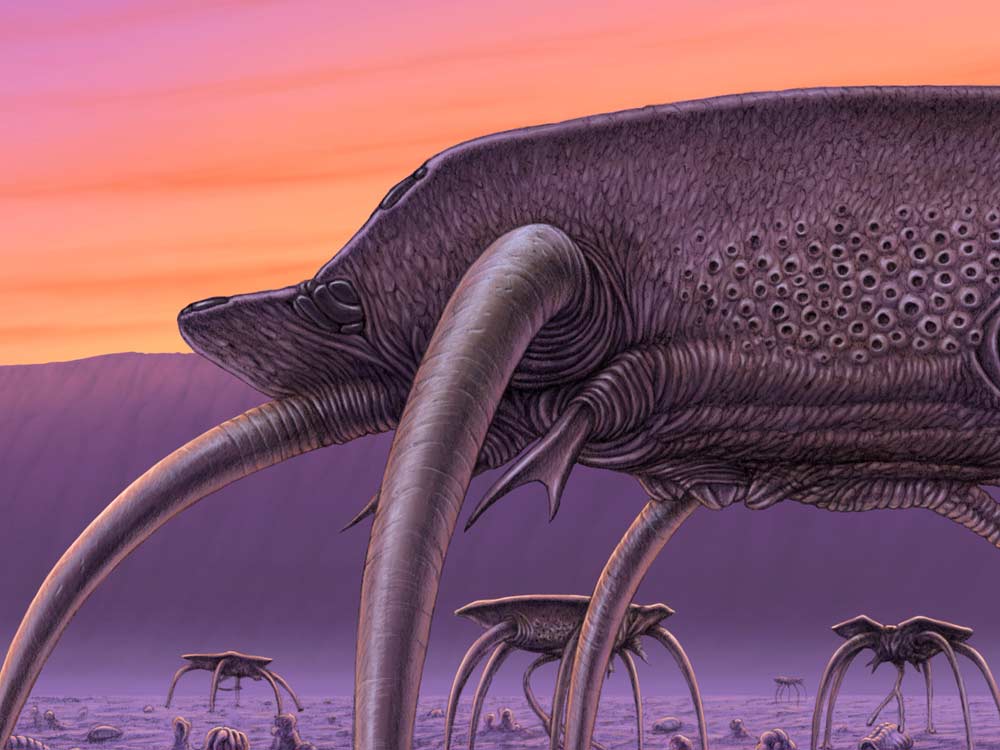
Magnavindix
Indeed this symbiosis has grown so exclusive that the Magnavindix have evolved specialized appendages that are only useful in carrying the Iumentus. Having no concern for danger, the livestock are free to grow fat and slow as they wander the open plain, grazing on the expanse of the fibrous purple carpet creature that dominates this land. Other species benefit from this arrangement too. The shy Brush-faced Verecundas stay close to the herd as their giant guardians deter nearly all predators that would attempt to approach.
Wide vistas and fast runners
Species in the Pedestres genus are built for speed. The Tripodal Plains runner is a great example, attaining a velocity of around 45 miles per hour. Traveling in small groups, plains runners can spot predators from far away using their dorsal eye cluster, which is positioned at the top of a long stalk. At nearly 2.5 meters above the ground, the stalk is ringed on all sides by highly sensitive eyes, giving it a 360° view of the surrounding landscape. When feeding, the plains runner extends its proboscis downward to scrape up the carpet organisms it primarily relies on, and this means that even at its most vulnerable, the eyestalk maintains its full height. There simply is no sneaking up on a group of plains runners. Predators on the plains have instead evolved sophisticated methods of outsmarting, out-maneuvering, or simply outrunning this creature. But it is only with great difficulty that they obtain a kill, and the majority of attempts end in failure.
Moving at great speed does have its disadvantages. The atmosphere of Veteris is rather dense, which makes it a difficult medium to push through. To counter this problem of physics, plains runners have an aerodynamic shape that minimizes drag. Still, the sheer energy output required to sprint through the thick air puts limits how long they can run at full tilt, and most chases ensue at a far less strenuous pace.
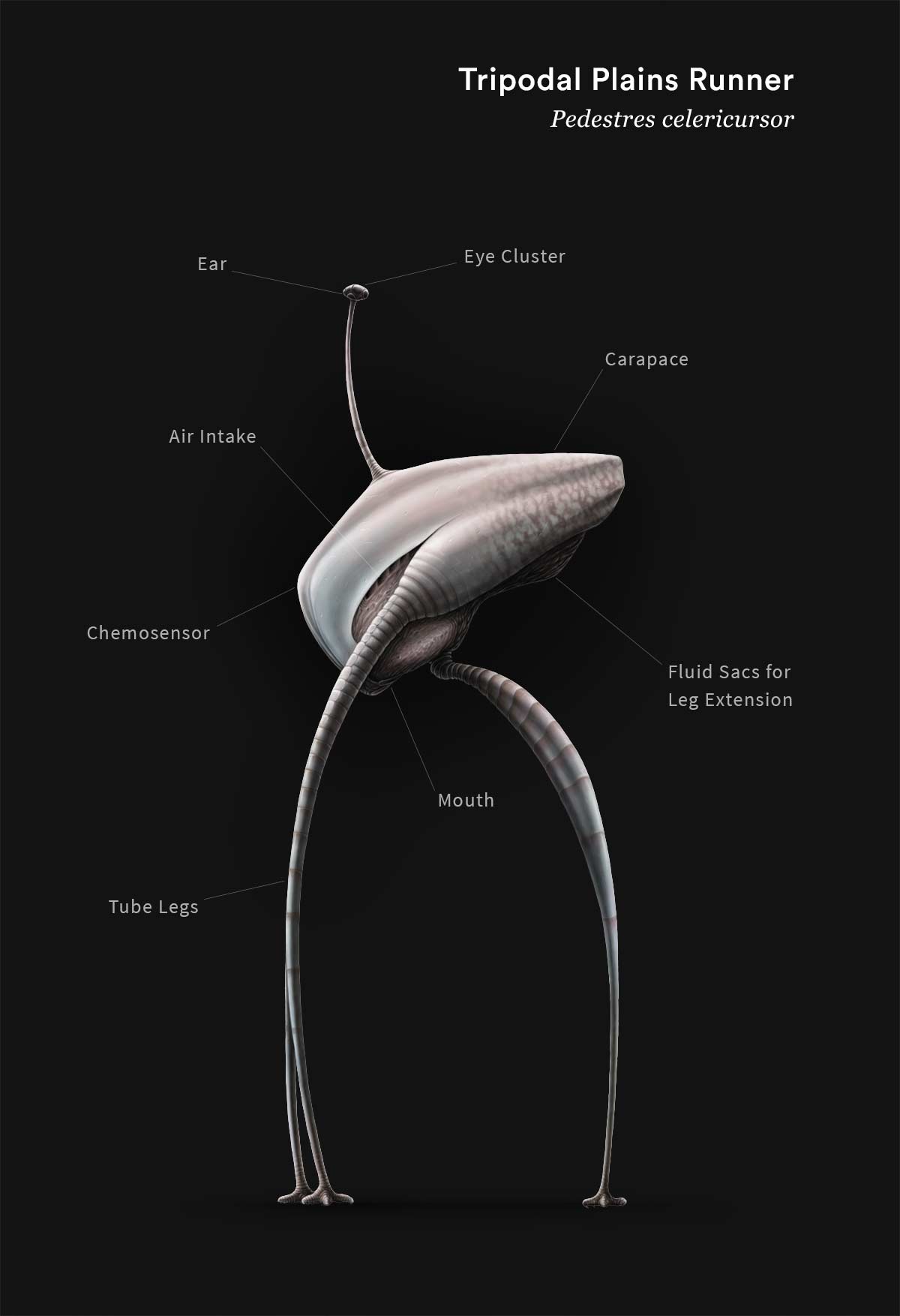

Upon a Spiral Throne
2022, Pencil
The spiral king
Not all inhabitants here are large or fast. The Spirex is only half a meter in length, and incapable of moving faster than a glacial rate of speed. It sits proudly atop its Loopribbon, a strange spiraling autotroph which rises slightly above the surrounding tube carpet. Such a prominent outcrop is an important place to attain and defend, as it provides its spiny inhabitant with elevated status in the spirex community, as well as a place to hide beneath. And defend it they do. It is not uncommon that two spirex extend their mouthparts and raise themselves to full height in a slow-motion battle of dwarf kings to decide ownership over a tiny castle.
